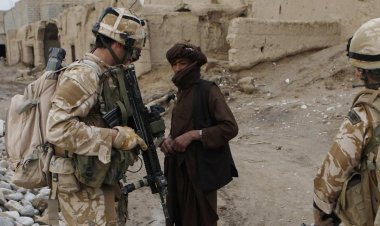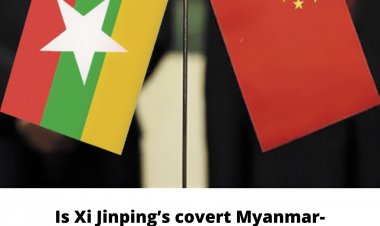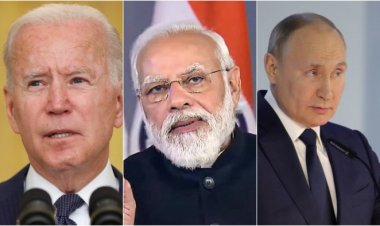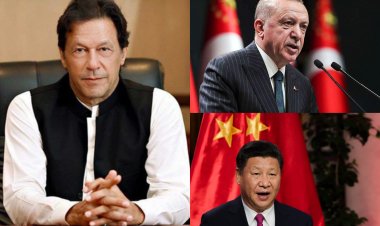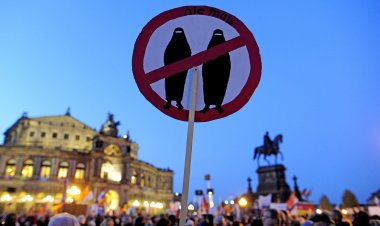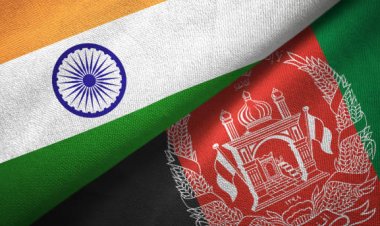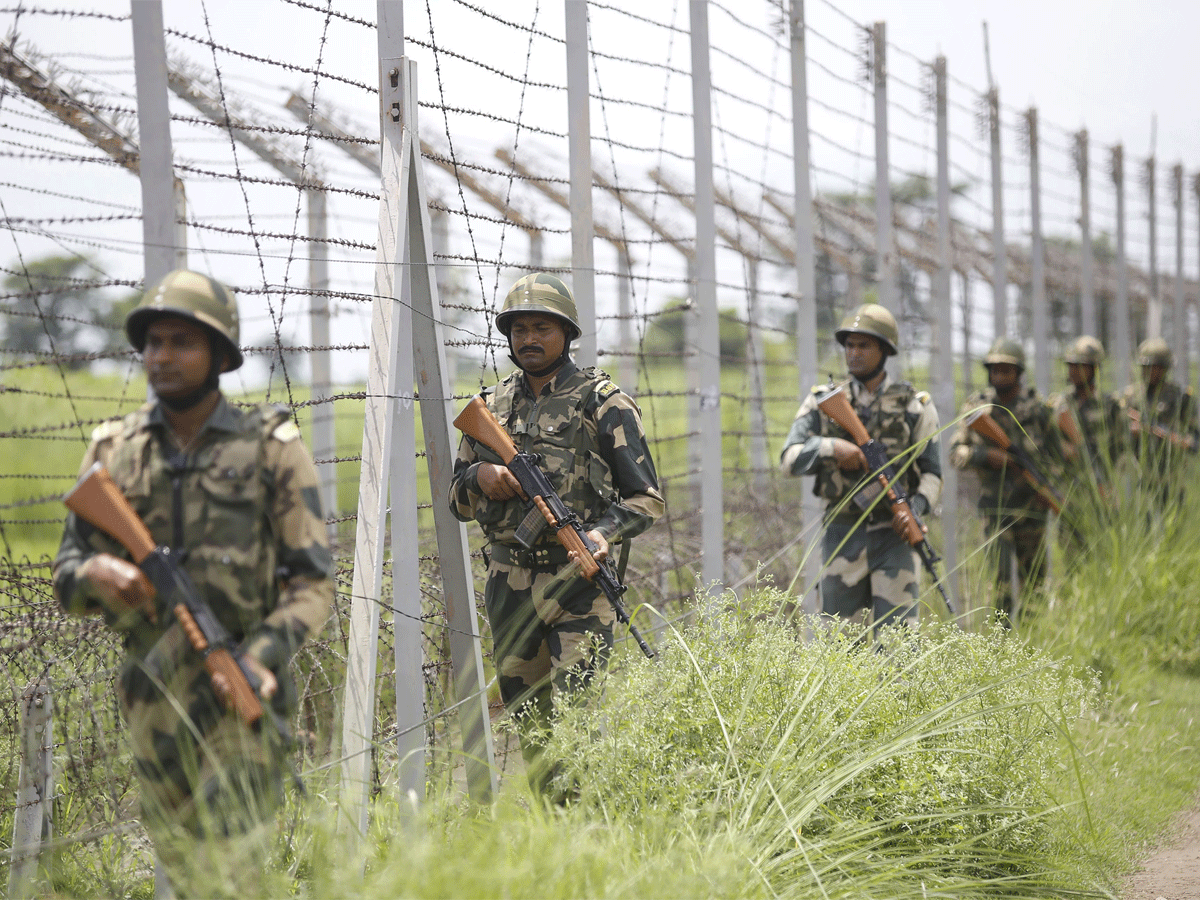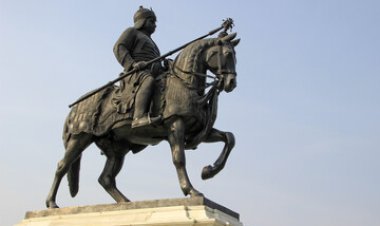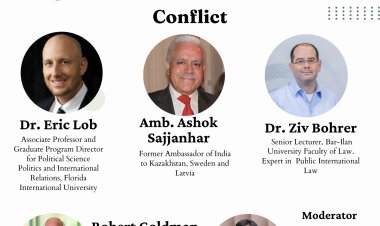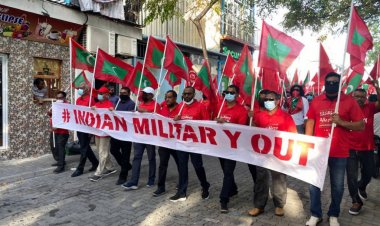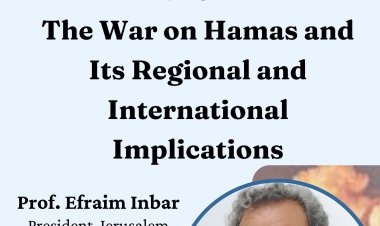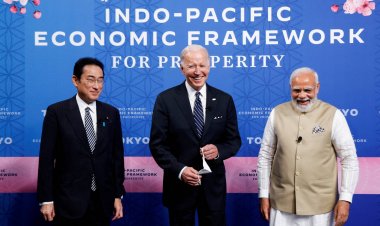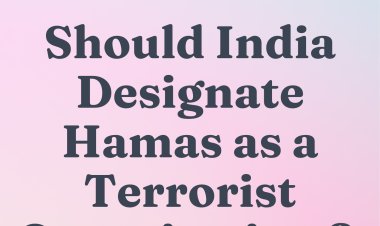Sikh Militancy 2.0: Khalistan Movement On The Rise Again
Apprehensions have risen about the revival of the Pakistan-backed Sikh separatist movement, better known as the Khalistan movement, in Punjab. Going forward, India needs to act on multiple fronts to counter the anti-India propaganda war of Sikh extremists and Pakistan.
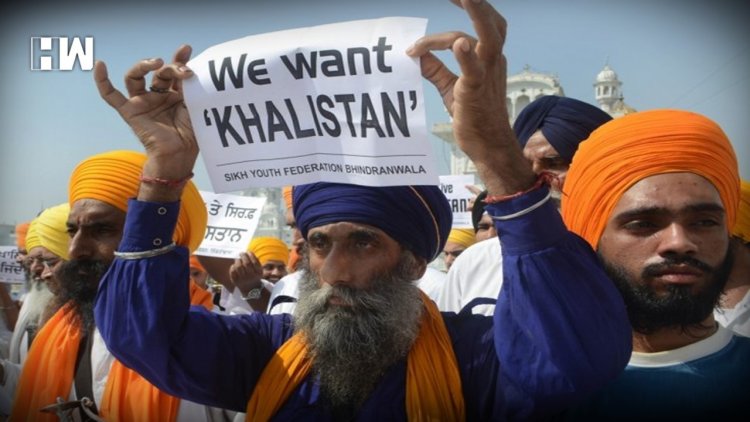
Analysis
By Abhinav Pandya
Punjab saw attacks in November on the Nirankari Bhawan using Pakistan-manufactured HR 36. This has once again brought back apprehensions of the revival of the Pakistan-backed Sikh separatist movement, better known as the Khalistan movement, in Punjab.
The Nirankari religious cult, seen as a heretic Sikh cult in popular perception, has always been at the receiving end of violence perpetrated by orthodox and extremist Sikhs for worshipping a living guru as against the conventional Sikh belief of absolute loyalty towards the holy book.
On 13 April 1978, the bloody clash between Nirankaris and extremist Sikhs left 13 dead. Later, in 1980, the spiritual head of the Nirankari sect, Baba Gurubachan Singh, was killed in Amritsar. These two incidents proved to be watershed moments that brought the Sikh extremist leader Jarnail Singh Bhindranwale into prominence, propelling Punjab into a dark and bloody decade of militancy.
The Khalistan movement started in the 1970s and can be rightfully called one of the most significant threats to India’s territorial unity. While the Khalistan movement was founded on the core issue of separatism and secession, the markers of Pakistan, being the moral and logistical support system behind the movement, could not be missed. It turned into a very violent terrorist campaign in the 1980s after Operation Blue Star (in 1984, a military operation by the Indian Army to neutralise Bhindranwale and his terror group occupying the Golden Temple in Amritsar, Punjab) and the anti-Sikh riots (1984), which threw up many questions on the complicity of Indian National Congress leaders in a reaction to the assassination of its leader and India’s then prime minister Indira Gandhi by her Sikh bodyguards. The militancy was crushed with a heavy hand by 1993.
Since then, Punjab has seen relatively peaceful and prosperous times. It emerged as one of the wealthiest states in India, with robust agriculture, industry, and a large inflow of remittances. However, fears of the revival of Khalistan movement had never died down and were always lurking in the shadows. The Sikh separatist sentiment, though driven out from the mainland of Punjab, was still flourishing among the Sikh diaspora in the United States (US), United Kingdom (UK), Europe, and Canada due to the permissive political climate.
On 13 September 2013, Sikh extremists in central London attempted to murder retired Lieutenant-General Kuldeep Singh Brar, the man who commanded Operation Blue Star, stabbing him in the neck. In mainland Punjab, Sikh organisations like Dal Khalsa and Dumdami Taksal have kept the Khalistan issue alive with covert patronage by some political parties. They even succeeded in building a memorial for Bhindranwale and other Sikh militants who died in the Operation at the premises of Golden Temple (Amritsar, India). Initially, there was some opposition by national political parties, but it died down soon, and now the memorial has become a place of reverence.
The new generation in the Sikh diaspora, which hardly has any reference point of living in India, lacks the understanding of India’s cultural dynamics, inter-religious harmony, and diversity. They have been nurtured on the politically motivated propaganda engineered by Sikh extremist leaders and the Inter-Services Intelligence (ISI) of injustices and killings that Sikhs faced in India during the separatist movement.
The false propaganda machine also thrives on lies that even today Sikhs in India are being oppressed by the Hindu nationalists and the Indian state. They are the members of proscribed terrorist organisations like Babbar Khalsa International (BKI), Khalistan Commando Force (KCF), and International Sikh Youth Federation (ISYF). The National Counter-Terrorism Strategy of the US, unveiled in October 2018, categorically stated that Babbar Khalsa wants to establish an independent Sikh state through terror and violence. After the Sikh militancy was crushed in Punjab, the groups mentioned above had largely confined themselves to low-profile activism.
However, from 2015 onwards, the Khalistan movement has been on the rise again. Informed sources indicate that Sikh extremist groups have moved beyond activism and have started indulging in violent activities. The Sikh diaspora is pumping huge funds into Punjab in the form of Gurudwara donations with an aim of reviving the Khalistani movement. India Today, in a story on the revival of the Khalistan movement, quoting Punjab Police, gives the following data on the militant activities of Khalistan movement:
In several incidents of terrorist violence since 2015, Hindu nationalist leaders have been assassinated. Six terror modules have been busted and 23 Khalistan terrorists arrested in Punjab since April 2017. The standard pattern emerging from a majority of the investigations points towards foreign actors making desperate attempts to revive terrorism in Punjab. The interrogations revealed the links between the cadres arrested in Punjab and the Sikh extremist leaders like Lakhbir Singh Rode (ISYF chief) and his allies based in Western Europe and Harmeet Singh ‘PhD’ of the Khalistan Liberation Force, allegedly sheltered in an ISI safe-house near Lahore military cantonment in Pakistan.
Besides, several psychological operations to revive terror in Punjab are also afoot. Since 2015, more than 150 incidents of the sacrilege of the holy scripture of Sikhs, Guru Granth Sahib, have been reported. It appears that the aim is to again revive the perception of injustice against the Sikh community. Social media is flooded with extremist audio and video content. Indian agencies have detected 140 Facebook Messenger groups, 125 Facebook pages, and hundreds of Whatsapp groups being used to radicalise Sikh youth in Punjab. Informed sources from the Indian security agencies reveal that such operations are planned and executed by Sikh extremists based abroad with robust support from Pakistan.
Further, Indian agencies inform that the rise of Hindu nationalist groups and their activities in Punjab is also being used to create the perception of fear among the Sikh community. The narrative against Hindutva used on a national level is being tweaked to suit the narrative of Sikh persecution in Punjab.
The international arm of Sikh separatism is visible more in the form of civil rights activism and sophisticated propaganda operations. “Sikhs for Justice” (SFJ), a Sikh human rights advocacy group, has given a call for “Referendum 2020” – a campaign to liberate Punjab from India and make it a nation state. Referendum 2020 aims to acknowledge and address the wishes of the Sikh community settled across the globe on the issue of Punjab’s liberation by 2020 and then pursue a referendum through the intervention of the United Nations.
The SFJ organised an event in London at Trafalgar Square in August this year and announced the London Declaration for the Referendum 2020. The Government of India registered its protest, but the British government allowed the event on the condition that it be conducted within the limits of the law. Besides, on various occasions, Indian diplomats and consular officials have been banned from entering Gurudwaras in Canada and the US.
The Pakistan Angle
Like before, Pakistan continues to play an important role in the revival of the Sikh militancy in Punjab. Pakistan’s support is in line with its long-term strategy of keeping India on the boil by fomenting terror in Kashmir and Punjab, stirring up social unrest, and creating economic turmoil. Pakistan has used terrorists as strategic assets against India for over four decades now. B Raman, the veteran spy of India, informs in his book, The Kaoboys of R&AW, that Richard Nixon’s administration along with Yahya Khan’s government of Pakistan began a covert action plan in 1971 to foment a separatist movement in Punjab. (A detailed analysis of Pakistan’s support of the Khalistan movement in the 1970s and 1980s falls beyond the scope of this article.)
According to informed sources in the Indian intelligence, ISI officers are acting as main handlers and organizers of Sikh separatist activities in Canada, Europe, the US, the UK, and Malaysia. The ISI is allegedly making vigorous attempts to revitalise the Khalistan movement by providing weapons, financial support, moral backing, and propaganda work both in mainland Punjab and abroad.
According to Indian sleuths, Lieutenant Colonel Shahid Mahmood Malhi, better known as “Chahdury Sahab” in the Pakistan army, is the mastermind of Referendum 2020. Indian agencies are said to have recovered documents about Referendum 2020 from his computer. Sources say he headed the Lahore detachment of ISI and might have played a key role in the targeted killings of Hindu leaders in Punjab, terrorist attack in Gurdaspur’s Dinanagar town (July 2015), and fidayeen (suicide) attack on the Pathankot air base (January 2016).
Further, Indian intelligence agencies are of the view that ISI is trying to connect terrorists operating in Punjab with the terrorist organizations operating in Kashmir. Zakir Musa, the commander of Ansar Ghazwat-ul Hind, an Al-Qaeda-affiliated Kashmiri terrorist organization, was studying in Punjab, and he has made several trips to Punjab in the recent past. Lately, Punjab police have arrested Kashmiri students studying in Punjab for having links with the group.
In addition, Pakistan has been smuggling drugs, weapons, and counterfeit currency into Punjab through the border districts of Firozpur, Pathankot, Tarantaran, and Gurdaspur in vast quantities. A recent study by the government suggests that 860,000 young men (15-35 age bracket) in Punjab are drug addicts. Fifty-three per cent of them are addicted to heroin. This menace of drug addiction leaves a lot of youngsters vulnerable to extremist religious indoctrination, and the propaganda machinery is tuned to the target audience.
Activists engaged in de-radicalising young minds at the grassroots level told this writer that ISI would also target the diverse organised crime syndicates in Punjab. Some of these groups are said to have expressed sympathies for the Khalistan movement on their Facebook pages, purportedly to acquire social legitimacy and weapons from ISI handlers based in Pakistan. Though there is still limited development that has happened on this front, it is a scary proposition for the counter-terrorism agencies of India if ISI can reach out to local crime syndicates.
It is easy to read into the deeper geopolitical motives behind some of the open activities of Pakistan to gain the goodwill of Sikhs. For example, many ISI generals including the former ISI chief Hamid Gul have openly supported the Khalistan movement. Several Khalistani extremists are sheltered in Pakistan. Gopal Singh Chawla, a staunch anti-India Sikh extremist, is often seen sharing the dais with Hafiz Saeed.
Recently, Pakistan has been going the extra mile to please its Sikh minority, which stands out in light of its history of oppressing the minority communities in the country. Pakistan opened the Kartarpur religious corridor between Indian and Pakistani Punjab, a demand that it has been refusing for long. Before this, Pakistan also released stamps in the memory of Sikhs killed by militants in Kashmir and exempted Sikhs from the compulsion of wearing helmets while driving as a sign of respect to their religious sentiments.
Apart from this, it appears that Pakistan is also facilitating the support of its friends like Turkey for the SFJ. Recently, Punjan Chief Minister Captain Amarinder Singh’s visit to Turkey had to be cut short after the SFJ filed a complaint in Turkey alleging that Singh’s government in Punjab was detaining and torturing the peaceful activists of SFJ in Punjab.
In Punjab, the sentiment for the Khalistan movement is still muted, but the authorities still believe that unlike the last decade, there is no dearth of foot soldiers. The resurgence cannot be wished away, and if the situation is not tackled early, it can prove to be alarming. With the elections approaching soon in India, the issue of Sikh identity and grievances will be a politically sensitive one. The Indian government appears to be sensitive to the potential of the threat. Hansraj Gangaram Ahir, the Minister of State for Home, clearly stated in Parliament, “Inputs indicate that ISI operatives are making efforts towards moral/financial support to pro-Khalistan elements for anti-India activities as well as to revive militancy in Punjab.” The central government has already alerted the states of the potential revival of Sikh militancy.
However, India has apprehensions of the Kartarpur corridor being part of some larger game plan of the ISI to radicalise Sikh pilgrims visiting Pakistan. India’s cautious approach is clearly visible in the fact that it made it clear that the gesture of relaxing the no-communication policy for the Kartarpur engagement was purely out of respect for Sikh religious concerns and does not indicate a shift from its stated position of terror and talks not going together. In the future, India needs to act on multiple fronts to counter the anti-India propaganda war of Sikh extremists and Pakistan, and taking adequate measures to keep the faith of Sikhs in India’s democracy.
Key Words: Khalistan, Punjab, Sikh Referendum, Kartarpur Corridor
Abhinav Pandya is the author of “Radicalization in India: An Exploration” and Founder and CEO of Usanas Foundation.
Disclaimer: The paper is author’s individual scholastic articulation and the facts and figues quoted are duly referenced, as needed, and are believed to be correct.
The Swarajya published the original article.

